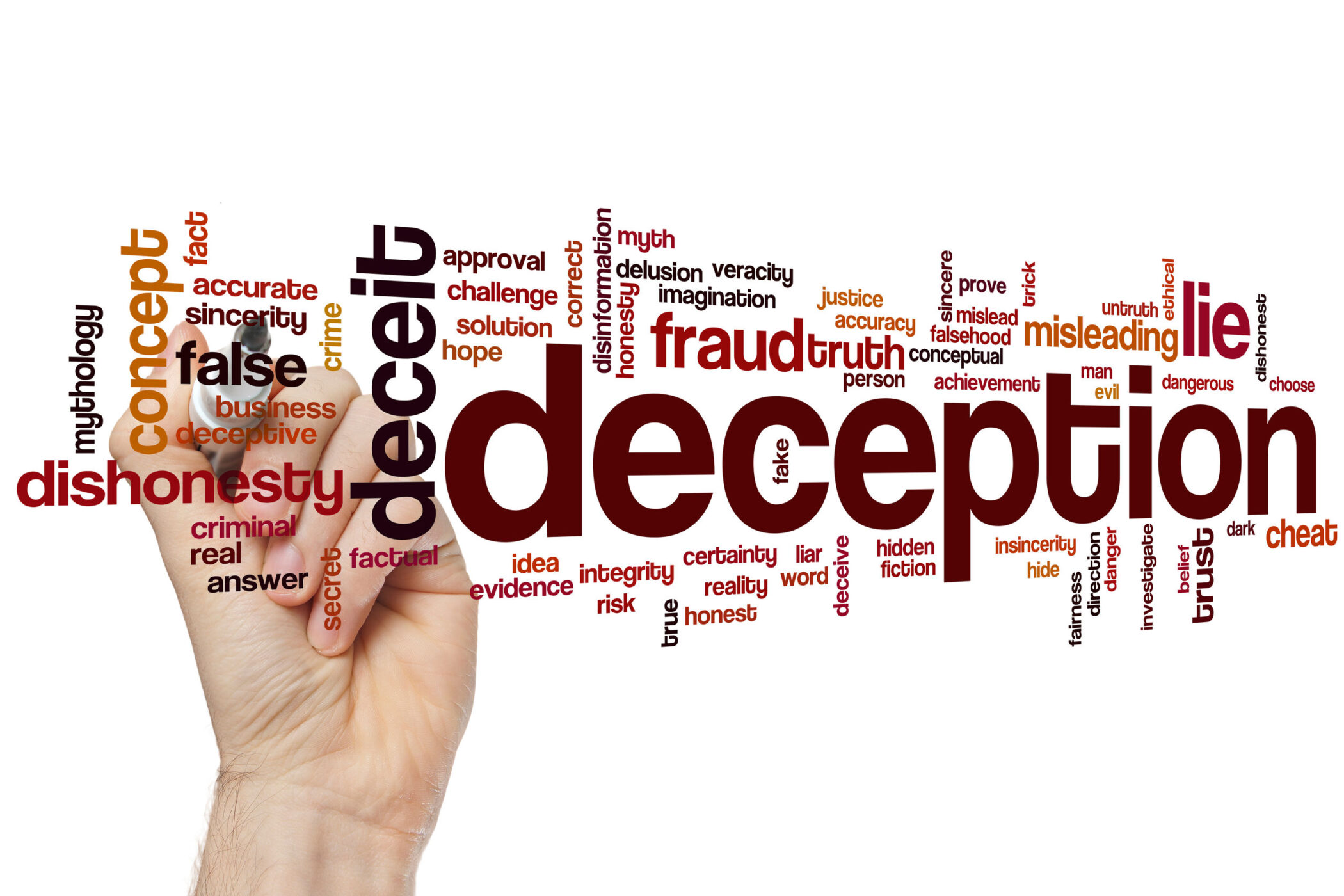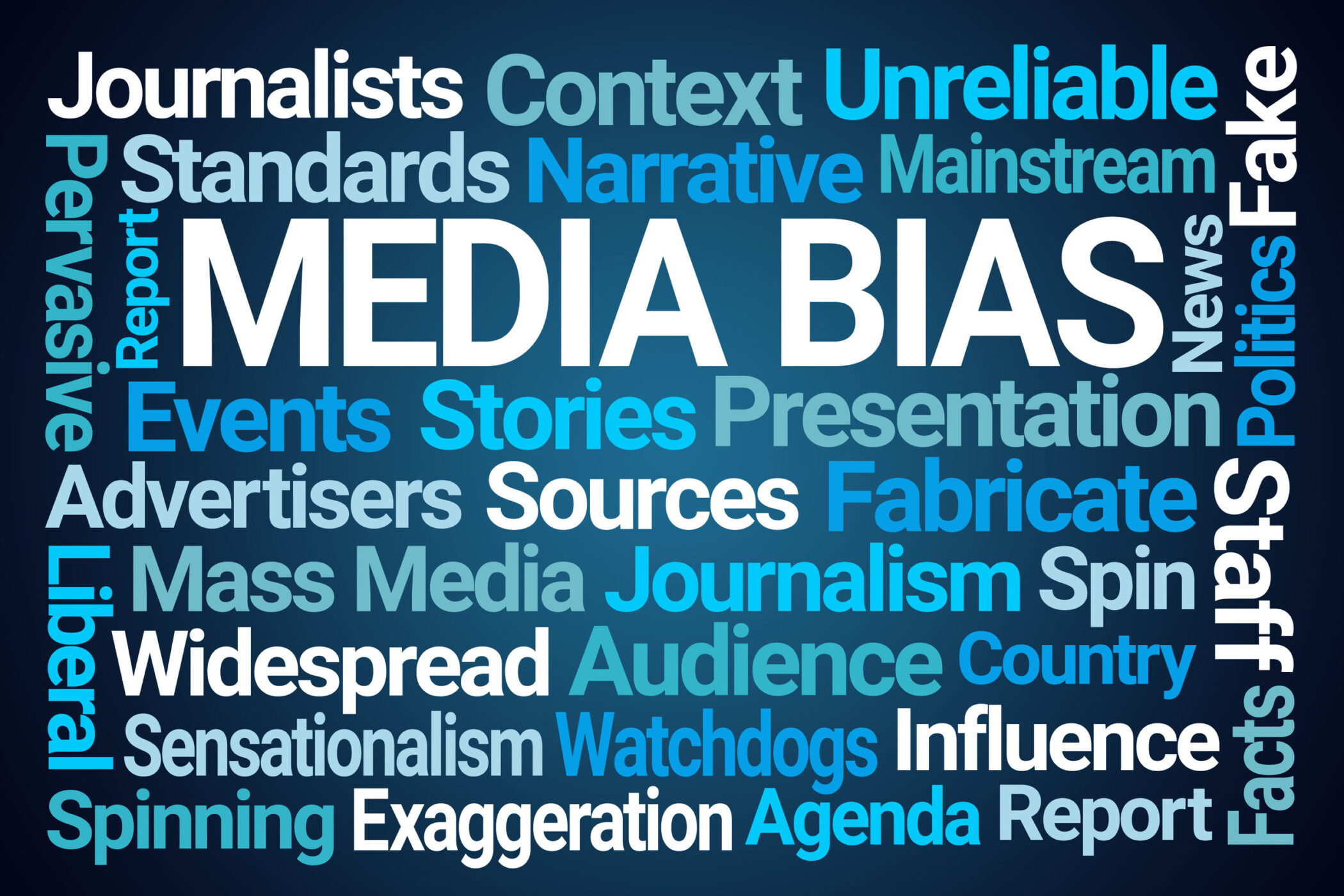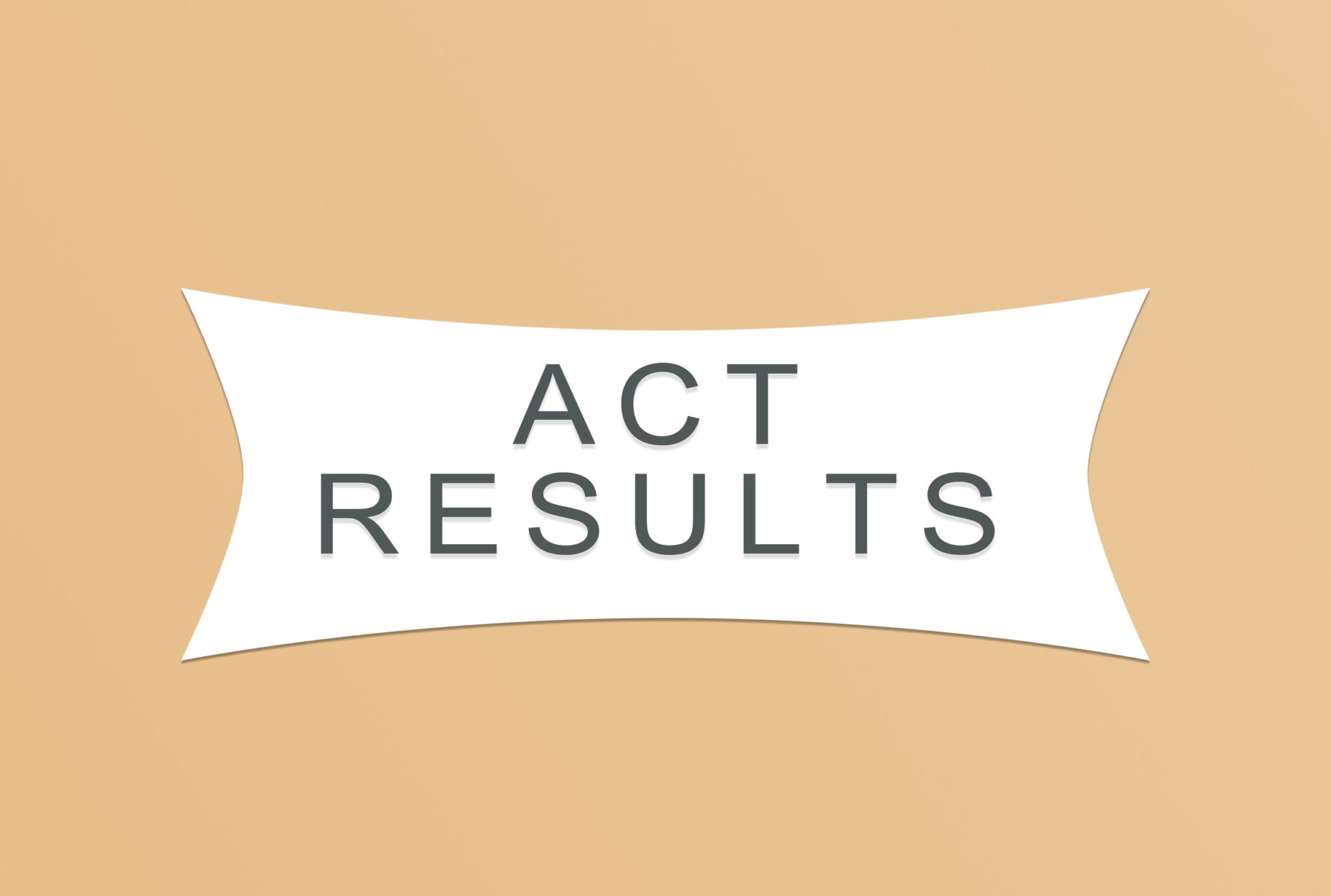A new flyer from the Kansas Association of School Boards (KASB) would be right at home as satire at The Babylon Bee, the Onion, or Saturday Night Live. But their latest attempt to spin poor outcomes as good news is no laughing matter to the tens of thousands of students left behind each year.
It’s hard to decide which of the six claims are the most egregious, but I’ll start with ACT scores.
Deception #1 – ACT outcomes are at record lows
KASB writes, “Kansas was just one of six states that maintained or increased ACT scores with the Class of 2022.” The truth is that the average composite score and college readiness level matched last year’s worst-ever levels. Only 21% of Kansas graduates are college-ready in English, Reading, Math, and Science, down from 32% in 2015.

And less there be any confusion that Kansas composite scores compare well to other states, ACT ranks Kansas as #35 for White students, #37 for Hispanic students, and #35 for Black students.
Deception #2 – Kansas is not high performing
KASB claims Kansas is the 13th-best for student “outcomes,” but the sad reality is that Kansas is in the bottom third of states measuring actual achievement.
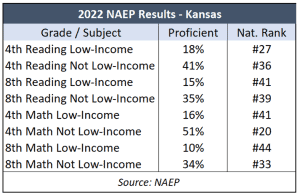 The state’s best ranking on the latest National Assessment of Educational Progress (NAEP) is #20. Reading proficiency for low-income 4th-graders is #27 (at just 18% proficient), and all the other rankings are in the 30s and 40s.
The state’s best ranking on the latest National Assessment of Educational Progress (NAEP) is #20. Reading proficiency for low-income 4th-graders is #27 (at just 18% proficient), and all the other rankings are in the 30s and 40s.
So, how does KASB twist these numbers into a high national ranking? By cooking the books. Its methodology counts things that are not measures of academic preparation, like high school graduation and drop-out rates and post-secondary education enrollment, which collectively account for two-thirds of the points in the overall ranking. And some of the NAEP results they use count some students twice.
Deception #3 – graduation rates
KASB celebrates a “record high” 90% graduation rate, which only means school districts gave diplomas to many students who cannot read or do math at grade level.
Preliminary 2023 state assessment results for 10th-grade students show 45% below grade level in math and 35% below grade level in English Language Arts. Those numbers have been pretty consistent for several years, and historical data shows that achievement declines as students progress in school, so we can be reasonably sure there is no magical improvement in the last two years.
Deception #4 – spending compared to other states
A dollar spent in Kansas buys a lot more than a dollar in New York or California, so one cannot fairly compare nominal spending per student. Adjusting spending to each state’s cost of living, we find that Kansas spent $19,451 per student in 2021, the most recent data available from U.S. Census; that is #9 in the nation, not below the national average as KASB wants you to believe.
Deception #5 – K-12 share of the state budget
No one is saying that K-12 funding will break the budget as KASB claims; that’s just another way of implying that schools are underfunded.
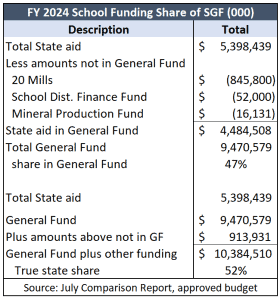 Public school funding continues to absorb the most significant portion of the State General Fund budget, but KASB says it will be only 47% this year, the lowest share since 1997.
Public school funding continues to absorb the most significant portion of the State General Fund budget, but KASB says it will be only 47% this year, the lowest share since 1997.
However, the accounting has changed since 1997, with $913 million provided from other funds.
If the money from 20 Mills of property tax and the amounts provided through the School District Finance Fund and the Mineral Production Fund all went through the General Fund, the total would be $10.384 billion. Total state aid this year is $5.398 billion, or 52% of the total if everything went through one fund.
Deception #6 – Special Education is fully funded
According to state law, the state is supposed to reimburse school districts for 92% of their excess costs (what is left after deducting state aid for regular education of special education students and federal aid). School districts say they are only getting 69% reimbursed, but the 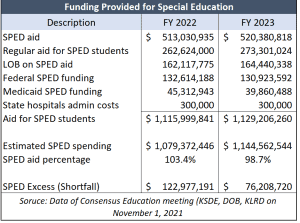 formula in state law does not count all of the money provided, and Department of Education officials say they don’t know why Local Option Budget related to special education aid was left out of the formula, but other LOB money is counted.
formula in state law does not count all of the money provided, and Department of Education officials say they don’t know why Local Option Budget related to special education aid was left out of the formula, but other LOB money is counted.
KSDE has not published final results for FY 2023, but the latest data available shows the state gave districts $123 million more than they spent on special education in FY 2022 and $76 million more than was expected to be spent last year.
One more thing. It’s hard to say special education funding is too low when you’ve increased special education and special education co-op cash reserves by $42 million between 2019 and 2022.
Many students do well, but these shameless attempts to deceive parents, school board members, and legislators are further evidence that many public education officials will not take action to address the state’s student achievement crisis with a lot of kids.
The Legislature must decide whether to accept low achievement and deception or step in to give students a fighting chance.


